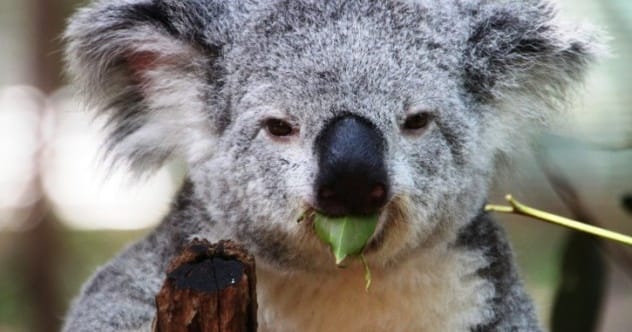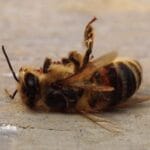Our planet is home to millions of incredible species, each playing a role in a vast web of life that has taken eons to weave. Most animals have living relatives, branches of their family tree that have survived and evolved. But some creatures stand alone, the very last members of their ancient group, or genus. Humans, for instance, have no other living species in our Homo genus. Our closest living cousins are chimpanzees and bonobos. But we’re not the only ones with this unique status. Get ready to meet 10 fascinating animals that are the last of their kind, true evolutionary marvels!
10. Platypus (Ornithorhynchus anatinus)
The Platypus, scientifically known as Ornithorhynchus anatinus, is a truly one-of-a-kind creature from eastern Australia. This furry, aquatic mammal looks like a delightful mix: it has a bill like a duck, fur like a mammal, and lays eggs like a reptile! It’s believed that mammals branched off from reptiles about 280 million years ago, making the platypus a living window into that ancient past. Sadly, this unique animal is currently a threatened species.
What makes the platypus so special? It’s one of the few mammals that produces venom. It also uses electrical currents to find prey underwater and, unlike most mammals, lays eggs. Because it combines traits from different animal groups, scientists study the platypus for amazing discoveries. For example, its milk is being researched for new antibiotics, and its venom might hold clues for treating diabetes.
9. Honey Badger (Mellivora capensis)
Honey badgers, or Mellivora capensis, are famous for their fearless attitude. You might have seen videos of these small but mighty animals boldly facing lions or other large predators. Perhaps this feisty spirit is why they’re the last surviving member of their genus.
But their courage isn’t their only superpower. Honey badgers have loose, thick skin around their necks. This allows them to twist around and bite back if an attacker tries to grab them. Studies show that porcupine quills and dog bites rarely get through this tough skin. They’re also quite smart for their size and have even been seen using tools! While they eat a variety of foods, they have some immunity to snake venom, which is handy since snakes make up about a quarter of their diet. If bitten by a venomous snake, a honey badger might just take a nap for a few hours and then wake up to finish its meal.
8. Koala (Phascolarctos cinereus)
Koalas, with the scientific name Phascolarctos cinereus, are one of Australia’s most beloved animals. These small marsupials are related to kangaroos and wombats. Scientists think koalas evolved to eat almost only eucalyptus leaves, a plant native to Australia. Here’s a fun fact: koalas are one of the few animals besides primates (like humans and monkeys) that have fingerprints! Their fingerprints evolved separately, leading scientists to believe that fingerprints help animals grip things, like tree branches.
Despite being so iconic, koalas face a tough future. In February 2022, the Australian government declared koalas endangered due to challenges like wildfires, drought, and losing their homes. Researchers estimate that their numbers in New Queensland and New South Wales dropped by about 50% in the last twenty years. The whole country may have lost around 30% of its koalas between 2018 and 2022.
7. Aardvark (Orycteropus afer)
The Aardvark, though a bit peculiar-looking, is a highly specialized mammal native to Africa. Surprisingly, it’s closely related to elephants! These medium-sized, nocturnal animals are expert burrowers. While not currently endangered, their population is declining.
Aardvarks use their long snouts and strong claws to break into termite mounds and slurp up the insects inside. This diet has earned them the nickname “antbear.” Today, the aardvark is the last of its genus, Orycteropus. Fossil records show that its relatives once roamed Europe and Asia. Scientists believe the aardvark’s branch of the animal family tree split from other primitive ungulates (a group including elephants and manatees) around 54 million years ago.
6. Dugong (Dugong dugon)
Dugongs are gentle marine mammals belonging to the order Sirenia, which also includes three manatee species. Their scientific name is Dugong dugon, and they are the last of their specific family line. A close relative, Steller’s sea cow, was sadly hunted to extinction by humans in the 1700s. Today, dugongs are considered vulnerable, but many areas have laws to protect them.
These peaceful giants can grow up to 13 feet long and mostly munch on seagrass in the Indian and eastern Pacific oceans. Like aardvarks, dugongs are thought to be distant relatives of elephants. Steller’s sea cows, their extinct cousins, lived in colder waters and were huge, reaching over 30 feet long! Unfortunately, they were wiped out just 30 years after scientists first discovered them.
5. Narwhal (Monodon monoceros)
The narwhal’s scientific name, Monodon monoceros, means “one tooth, one horn,” referring to its famous tusk. Often called the “unicorn of the seas,” narwhals live in the cold, deep waters of the Arctic. Because their habitat is so remote, much about them remains a mystery.
We know their closest living relative is the beluga whale; together, they are the only two living species in the Monodontidae family. These two whale species sometimes even interbreed! Scientists think the narwhal’s long tusk, which is actually a protruding tooth, might act like a sensor because it’s full of nerves. Narwhals are also incredible divers, plunging down to 4,500 feet to find food.
4. Hirola (Beatragus hunteri)
The hirola, a slender antelope with distinctive ridged horns, is the last living member of the genus Beatragus. This makes it critically endangered, with only about 500 individuals estimated in the wild as of 2017. Scientists believe this genus might have diverged from animals like wildebeest and topi around 7 million years ago.
These antelopes are found only in a small area along the Somalia-Kenya border. Their numbers drastically dropped by about 90% since 1980. However, there’s hope. Some local communities believe the hirola has spiritual importance for their cattle. Conservation efforts started in 2008, involving local people to create safe, predator-free areas. Thankfully, their numbers are now reported as stable, and community projects are gaining support.
3. Plains-Wanderer (Pedionomus torquatus)
The plains-wanderer is the only bird on our list and the sole survivor of its family, Pedionomidae. This quirky little bird is native to Australia, with most of them living in the Riverina region of New South Wales. Although it lives in grasslands, it’s actually related to gulls and other shorebirds. Its closest living relative is a shorebird from South America! This connection has led scientists to trace the plains-wanderer’s ancestors back to when South America and Australia were connected, about 60 million years ago.
Today, this tiny bird is critically endangered, with only around 250 to 1,000 left in the wild. Plains-wanderers aren’t great flyers, so their first reaction to danger is to run. They face threats from predators like foxes and from their grassland habitat being turned into farmland.
2. Maned Wolf (Chrysocyon brachyurus)
Chrysocyon brachyurus, the maned wolf, is the largest canid (dog family member) in South America. With its reddish fur and long legs, it might look like a fox on stilts, but it’s neither a wolf nor a fox. It’s a distinct species, the only one in its genus! The maned wolf evolved to thrive in grassy savannas, which might explain its long legs, helping it see over tall grasses. They mark their territory with strong-smelling urine.
Not much is known about their breeding habits because they are mostly active at night. Scientists think pairs might live separately within the same territory and only come together for breeding. Because it’s so different from other canids, researchers believe the maned wolf might have been the only large South American canid to survive the late Pleistocene extinction. Fossils of maned wolves date back to this ancient period.
1. Black Caiman (Melanosuchus niger)
The black caiman is the largest member of the Alligatoridae family and the last of its genus, Melanosuchus. Found across central South America, these impressive reptiles can grow up to 16 feet long and are the top predators in their rainforest ecosystems. During flood seasons, black caimans spread out with the rising waters, returning to permanent lakes and rivers when the dry season arrives.
They were once very common, but hunting in the 1940s and 1950s greatly reduced their numbers. While many types of caimans were hunted, the black caiman was especially prized for its large size and high-quality leather. Fortunately, hunting is now largely regulated, and there are some strong populations of black caimans in the wild. However, it’s estimated they are still not as numerous as they once were.
These ten species are remarkable reminders of the incredible diversity of life and the long, complex journey of evolution. Each one tells a unique story of survival, adaptation, and, sometimes, a precarious existence as the last of their ancient line.
What do you find most fascinating about these sole survivors? Share your thoughts in the comments below!










